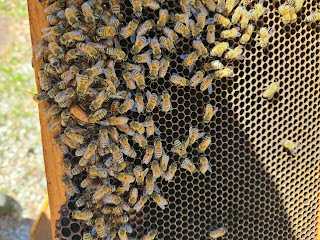
Bee keeping is a hobby that has many benefits for you, your community and the planet. Whether you are interested in producing your own honey, helping the environment, or learning more about these amazing insects, bee keeping can be a rewarding and enjoyable experience. Here are some of the virtues of bee keeping that you might not know about. ## Honey One of the most obvious benefits of bee keeping is that you get to harvest your own honey. Honey is a natural sweetener that has many health benefits, such as boosting your immune system, soothing sore throats and coughs, and healing wounds. Honey also tastes delicious and can be used in many recipes, from baking to salad dressing. Unlike commercial honey, which is often pasteurized and filtered, raw honey from your own hive retains all its nutrients and enzymes. You can also enjoy different flavors of honey depending on what flowers your bees visit. ## Environment Another virtue of bee keeping is that you help the environment by supporti...





